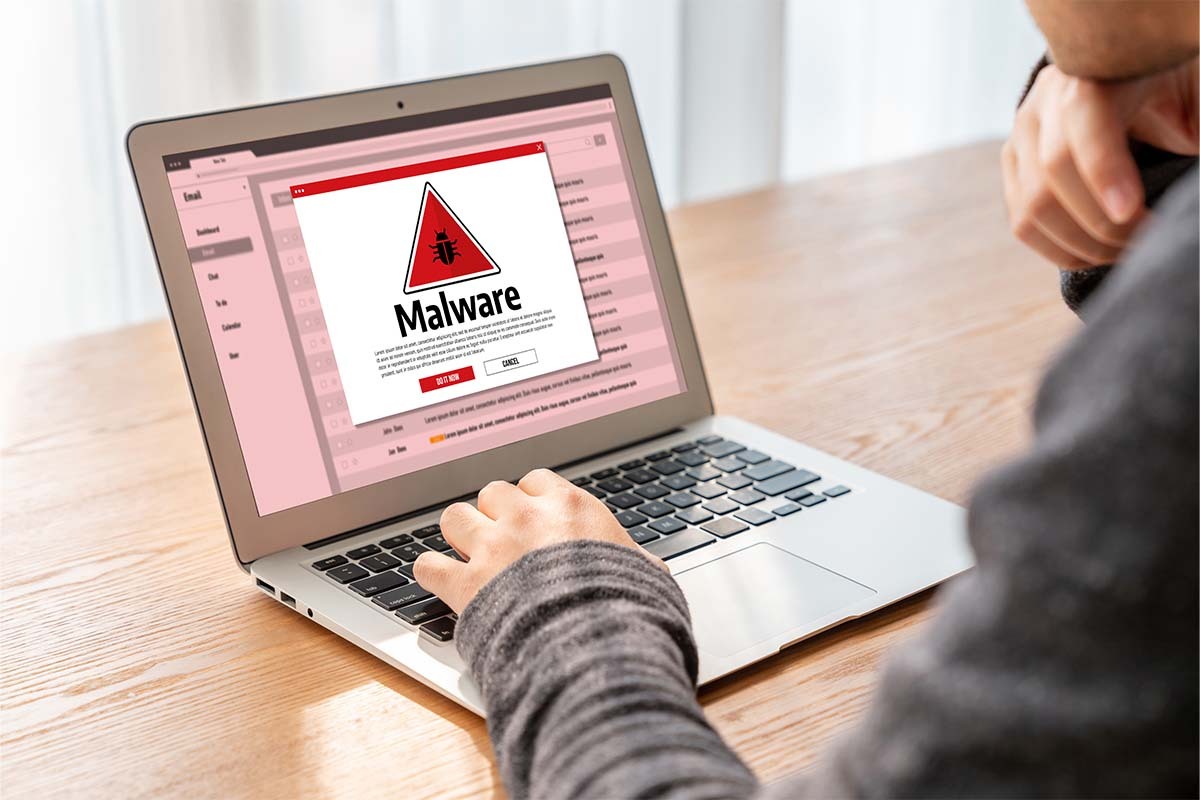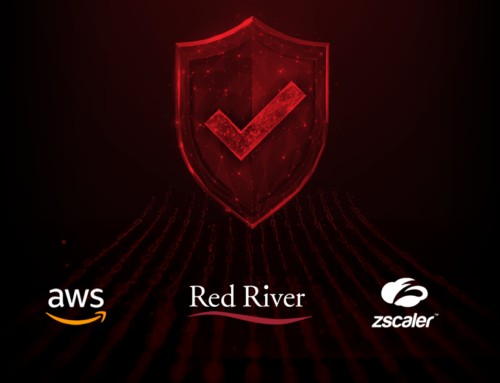
Why SIEM Tools like Microsoft Sentinel Are a Cybersecurity Must
Adopting a Microsoft Sentinel workspace could be the next logical step to ensure your cybersecurity posture remains robust enough to deter, detect and expel threats to your organization. If you’re a business leader who has consistently invested in robust digital protection, you may be wondering why you need to transition to a security information and event management (SIEM) stance that uses a Microsoft Sentinel managed service. That’s a fair question and one we routinely field when advocating for a new or innovative approach to data breach protections.
To best answer questions about the critical need to upgrade seemingly effective cybersecurity defenses, consider how we got here. Turn back the page a hundred years, when iron bars on windows were viewed as a powerful deterrent to burglars. These physical barriers worked until someone invented things like the blowtorch and fast-cutting hacksaws. Fast forward to the beginning of the digital age, when data security was simply a matter of backing up information to a hard drive and unplugging it from a desktop. Once the internet became popular and electronic communications flourished, anti-virus software and firewalls were necessary.
In today’s digital landscape, corporations have valuable and confidential information strewn across the cloud that can be accessed from in-house computers, laptops and handheld devices using — sadly — public Wi-Fi in some cases. Although we work diligently to secure our client’s data, hackers devise new schemes to circumvent the best defenses every day. Rather than wait until your operation suffers a crippling ransomware attack, we’d prefer to harden your attack surface right now. Putting Microsoft Sentinel in action could mean the difference between reeling from a data breach’s financial and reputational injuries or achieving your business goals.
Importance of SIEM-Driven Cybersecurity
The SIEM tools being deployed to insulate confidential digital assets have risen in status. Because cybercriminals have honed their illicit schemes to overcome wide-reaching defenses, SIEM tools such as Microsoft Sentinel are considered fundamental defenses. This holds particularly true of operations that store controlled unclassified information related to military contracts, healthcare records, financial accounts and information that exposes staff members.
The security information and event management strategies and tools locate your company’s digital information across cloud storage spaces, hard drives, email, text messages and others. The SIEM tools then centralize a wide variety of data in a single platform’s dashboard. Pulling everything under one umbrella allows the automated system to analyze and respond to potential threats in real time. This approach greatly enhances your enterprise’s ability to detect anomalies before hackers infect the network with malicious software such as ransomware. These are ways SIEM tools work.
Data Collection: This type of system gathers information beyond in-house servers or single cloud storage locations. It reaches across the entire organizational landscape to account for the data housed in or transmitted by endpoint devices. The non-stop collection of data is continually centralized and scrutinized. This practice offers CIOs and third party cybersecurity experts a clear, concise view of events affecting the digital aspects of the organization.
- Log Monitoring Choices: Industry leaders can select the SIEM tools that best serve their corporate needs. A heightened focus on specific logs can be used to monitor their activity. This can prove useful to department heads who wish to gain a better appreciation of certain applications or areas of concern.
- Data Insights: The SIEM approach utilizes AI and machine learning to perform data correlation exercises. Data correlation is the process of combining seemingly divergent information to generate insights and make predictive decisions. One way of understanding data correlation would be to think about SIEM security as a chess match, while outdated methods are playing checkers. It’s a way to uncover meaningful conclusions that would otherwise remain unknown.
- Alerts & Response: Previous detection and alert models failed to distinguish between emerging, imminent and minor threats. The inability to assess, categorize and present varying risk levels resulted in a barrage of notifications and alerts that overwhelmed cybersecurity professionals. The SIEM tools we use today integrate rapidly advancing AI and machine learning to build customized algorithms. In terms of benefiting companies, they have jumped ahead light years in terms of efficiency and cost-effectiveness.
It’s abundantly clear to professionals in the managed IT and cybersecurity niche that SIEM tools have become a go-to resource for determined cybersecurity. However, this approach to hardening your attack surface and threat response is not without challenges.
Overcoming Legacy SIEM Systems
It’s critical to distinguish the forward-facing SIEM tools we are integrating today from outdated legacy systems. Early solutions were largely designed to detect and react to digital dangers by assessing log entries and collecting data. Many of the older security measures were designed to protect digital assets housed in on-premises systems.
Keep in mind that SIEM wasn’t developed until around 2005 and didn’t cover cloud-based data until the late 2010s. An outdated SIEM system could be as young as five years old. If the SIEM tools haven’t been advanced in recent years, your digital security could run into the following problems:
- Collection and Correlation Hiccups: Traditional models may not be able to provide the real time collection and correlation of large swaths of data. Pulling digital information from new handheld devices, communication sources and applications may not be seamless.
- Cost Prohibitive: The initial costs associated with establishing a SIEM were significantly higher than they are today. Some require on-site personnel to manage them and outsourcing legacy SIEM systems typically costs more than employing advanced automation in a Microsoft Sentinel managed service.
- Slower Investigations: Without the AI and machine learning solutions used today, cybersecurity professionals are tasked with manually distinguishing risk factors. Slower investigations only give hackers more time to plant malware or orchestrate a ransomware takeover.
The greatest drawback to sticking with a legacy system is delayed response times. Reports indicate that a skilled hacker can complete a ransomware overthrow in under 45 minutes. As cybercriminals grow increasingly efficient at coordinating data breaches, organizations must either stay ahead of bad actors or fall prey to digital thievery. Setting Microsoft Sentinel in action is designed to deal with sophisticated schemes being used by the current generation of threat actors.
Why Upgrading to Microsoft Sentinel Matters
It’s important to understand that Microsoft Sentimental ranks among the proactive moves to ensure companies can defend against more sophisticated cyberattacks. A Microsoft Sentinel managed service provides a highly scalable SIEM approach that applies next-gen technologies to detect, deter and expel online thieves. In no uncertain terms, when your company puts Microsoft Sentinel into action, it benefits from cutting-edge innovations that run the gamut from identifying subtle cyber-hazards to threat-hunting capabilities. Its SIEM tools create an all-seeing eye that hackers cannot evade. These are key Microsoft Sentinel features that enhance your cybersecurity posture.
Cost-Effectiveness
Microsoft Sentinel reportedly reduces the cost of using legacy SIEM tools by upwards of 48 percent. A Microsoft Sentinel managed service is also scalable to meet the growing needs of businesses as well as seasonal highs and lows. It can be budgeted to accommodate growth, increased network activity and facilitate remote workforce security. It offers substantial savings, especially considering you gain access to a faster system that can catch a ransomware attack before the cybercriminal completes the usurpation.
Efficient Threat Intelligence

Microsoft Sentinel stays ahead of threat actors by utilizing a wide variety of digital threat intelligence instruments. It pulls comprehensive amounts of differing data together to quickly and effectively ferret out anomalies, risks and malicious software, among others. All of this data is crunched with AI and machine learning that possess superior abilities. A Microsoft Sentinel managed service user can also have cybersecurity experts create watch lists to emphasize the protection of high-value digital assets.
The SIEM tools you gain are in no way passive, nor do they rest. The analytics capabilities constantly look for hidden dangers by comparing activities across platforms and locations without dismissing events that appear harmless until they are thoroughly vetted.
Proactive Threat Hunting
The powerful threat-hunting tools employed by Microsoft Sentinel are based on the MITRE framework. MITRE, a non-profit organization, was created to offer guidance to the federal government. In 2013, it advanced a framework known as Adversarial Tactics, Techniques and Common Knowledge (ATT&CK). The MITRE ATT&CK method creates network-specific threat detection parameters that support customized threat-hunting activities. As you may have gleaned, adopting Microsoft Sentinel allows corporations to benefit from the latest thought leadership and cybersecurity measures available.
Rapid Threat Response
One of the key benefits of Microsoft Sentinel SIEM automation stems from its ability to establish threat detection guidelines that separate false positives from imminent and emerging risks. That opportunity helps reduce the number of alerts informational security personnel receive, maximizing the efficient use of their time. In some cases, your SIEM can include automated responses to corner malware while solutions are brought to bear.
SIEM Tools Support Regulatory Compliance
Organizations tasked with meeting strict government data privacy and protection regulations will find that SIEM tools simplify compliance. The U.S. Department of Defense (DoD) is currently implementing its Cybersecurity Maturity Model Certification (CMMC) policy. Defense contractors and supply chain businesses must adhere to hundreds of CMMC data security controls to enjoy the fruits of Pentagon contracts.
While that seems like it requires a Herculean effort, the DoD has sanctioned the adoption of Microsoft Sentinel as a proactive SIEM posture. A CMMC Assessment Scope report published by the DoD notes that “SIEM does contribute to meeting the CMMC practice requirements.” The same holds true of healthcare operations that must follow HIPAA guidelines, financial institutions and others across wide-reaching sectors. These are reasons why a state-of-the-art SIEM approach helps meet or exceed government regulations.
- Real-Time Visibility: Attempts to pilfer off critical data can be addressed while the incursion is being attempted. Models that don’t pass regulatory muster typically circle back to clean up the damage after the fact.
- Automated Reporting: The right SIEM tools allow CIOs to generate prompt reports to demonstrate ongoing compliance. Missing deadlines or failing to provide reports could result in hefty fines.
- Tracking: Oversight agencies are not going to take your word about incidents. SIEM tools track and record critical events, giving you documentation to fall back on if necessary.
- Security Gaps: The proactive nature of a SIEM approach lends itself to identifying network weaknesses. Adopting Microsoft Sentinel means you will know where a cybercriminal may strike and cure the vulnerability ahead of time.
Audit Simplification: SIEM tools centralize data and the information auditors require. Their ability to track and document incident reports and articulate how security gaps were fixed helps companies pass audits. With a quick click on a program, an official receives everything needed to certify your regulatory compliance.
A cloud-based SIEM such as Microsoft Sentinels delivers works in conjunction with a variety of other cybersecurity measures. Operations that rely on zero trust architecture to segregate digital assets based on network user needs usually find that SIEM solutions only enhance the least privilege approach. It may come as something of a surprise, but even the Internal Revenue Service (IRS) states that: “Deploying the SIEM with default settings will generate substantial data and alerts, but tailoring the tool to the agency’s systems, data protection requirements and operational environment will yield improved results.”
Implement SIEM Tools with the Help of Red River
The question decision-makers need to ask themselves is not whether to adopt SIEM tools. It’s whether your company benefits from a system with legacy vulnerabilities, mid-level threat detection and expulsion abilities or onboarding the next-gen cybersecurity posture of Microsoft Sentinel. If you would like to schedule a SIEM tools consultation, contact Red River today. Let’s get the process started!

written by
Corrin Jones
Corrin Jones is the Director of Digital Demand Generation. With over ten years of experience, she specializes in creating content and executing campaigns to drive growth and revenue. Connect with Corrin on LinkedIn.




